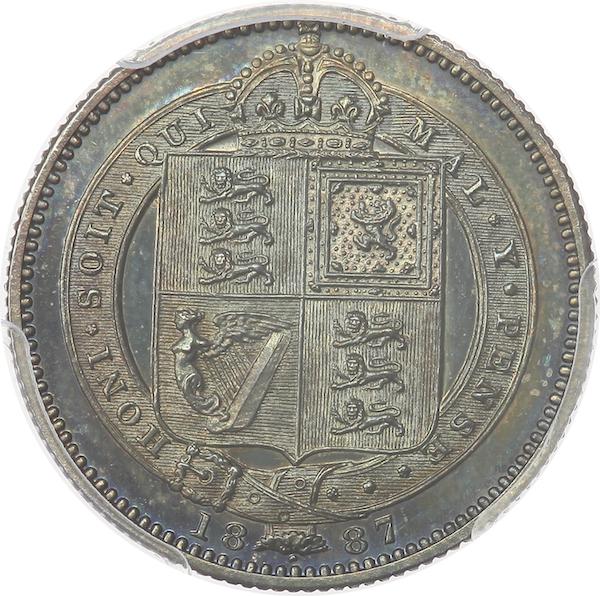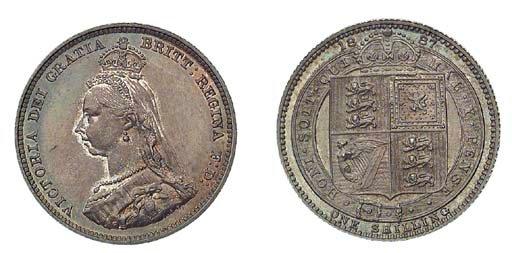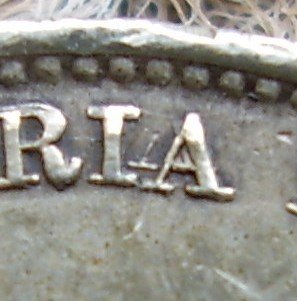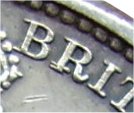|
|
The current range of books. Click the image above to see them on Amazon (printed and Kindle format). More info on coinpublications.com |
|
|


1887jubilee
-
Content Count
136 -
Joined
-
Last visited
-
Days Won
2
Posts posted by 1887jubilee
-
-
I am trying to track down a shilling collector who might know where this coin is. ESC 1406 (3rd. ed.) BSC 1000 (1st. ed.) I know and have seen the Royal Mint example but where is the one sold Spink & Son 11/7/2001 lot 1039 £1450 (£1668). I have the corresponding sixpence. The designer is said by Davies to be J E Boehm and the engraver said by Seaby & Rayner to be L.C. Wyon.
-
 1
1
-
-
The delay suited me perfectly as I managed to log on just a few lots ahead of the one I wanted. I should have missed it really. There was no sound though which was a pain. I can't get used to the extortionate charges though. Why do we put up with it. My local auction house do not charge ANY buyers premium. Which is fine if all you want is a few modern Royal Mint proof sets and a second hand fridge freezer.
-
 1
1
-
-
Could it more likely be clashed dies?
-
 1
1
-
-
did you try https://bsjauctions.auctionmobility.com/
I found this worked for me . It's a bit late now I am afraid. Half the problem was knowing if I was registered but a phone call soon confirmed. I was very happy with the coin I got and even happier that BSJ are bringing it back to the UK for posting here.
-

Rev. A proof. anyone seen rev. B proof?
-
 4
4
-
-
Looks like a classic Rev. B unless you have other information. Of course it comes in proof as well......... or does it?
When you say "we did the sixpences" what were your conclusions? I have worked on an analysis of over 2000 and I don't know of anyone who has come up with anything in the statistical form of pie charts, and statistics that I could talk to. The only other person that has heard it all is my grand daughter and since it sends her to sleep ................the floor is open.
-
 1
1
-
-
Yes. The R/V is a variety of the R/I. You will notice the serifs on all the Rs are long on the right of each foot. You will also have noticed the R/V on the R of Gratia which is not so strong. This is on all R/Vs.The R/B is not R/B it also is just a variety of the R/I . So there you have three R/I varieties already.
-
OK . You have got my attention. It is good to see I am still remembered amongst the officionardos. How many varieties are there? Well I will give you a clue. When my daughter wants the children putting to sleep she says "Grandad tell them the story of the die varieties of the 1887 sixpences. It has become something of a joke in our family. Pekris has an odd one which was thought to be a pattern and may still be I have only seen 3. (2 are mine and one is his.) If you really are interested and can cope with the mind numbing minutiae it would be best to begin with the R/I of which there are more than a dozen. Then the various proofs:- R/I ,matt, YH , normal JH short serifs rev withdrawn, rev 3 , filled crown, broad ribbon , narrow ribbon. How anm I doing, have you dozed off yet? Pattern with SIX PENCE only R6 so available; Of course you could include the Spink & Son pattern sixpences in tin, copper, brass, silver, gold, aluminium.....................with or without Spink & Son on the reverse.......................with or without MADE IN BAVARIA on the rim....................and a few that have S&S on the trunk or JEB or are blank...............some of these are easily found there were a couple last month in DNW.........fast asleep yet. Come to Plymouth and we will have a chat. There are some easy ones you still have missing.
Rob I am up over 350 counting all the repro stuff on the market
-
 1
1
-
 1
1
-
-
I have the whole lot photographed direct from a copy Dyer let me borrow and have both articles as well. There are other £2 pieces not mentioned notably the one with concave milling London Coins 6th. Aug 2010 auction 129 lot 1993. ex Davies. I have not worked out how to do a private messages so will not put details here.
-
 1
1
-
-
9 hours ago, secret santa said:So, will these coins be sent from the US or England ? It makes a huge difference to the shipping costs.
Not to mention import duties of 5% on Numismatic items
-
There is one helpful get area that is not taxed where it might otherwise be charged at the 5% and that is the exemption for "investment gold". I was charged on an 1887 £2 at the 5% but when challenged HMRC repaid the duty. As you say though you cannot get back the Royal Mail charge that was wrongly applied in the first place.
-
-
I have been studying 1887 sixpences for fifteen years and can confirm this as a recognized variety. You should see from the coin that the Rs all have both serifs left and right at the base of the upright so this coin is a variety of the R over I that is in most books. If you look at the R in BRITT: you should be able to see the R/I very clearly. This is a distinguishing feature of this die variety which has come to be called A over A but, as pointed out, it could be an inverted V. The specimens I have do not show a bar to the "A" but you will have noticed how weak the strike is from your own specimen. They turn up from time to time on ebay and fetch fairly normal prices but then most people don't know what they are looking at. In a survey of 1,518 sixpences I have found 5. I don't look for them any more. Extrapolating this would give a mintage figure of 12,107. Given You have one and Nick has one the sample then would indicate 17,000+. It is most likely this pair of dies had a normal use and so the actual figure would be more like 30,000. Well done on spotting it. There is a specimen in The Royal Mint collection RMM8457.
-
 5
5
-
-
I bought a BRESSER with 5 year warranty £48 on ebay. It works fine on the lowest 20X but the magnification is too high for a lot of coin work. I don't think we need anything over 25 X . I think it would be good if someone came up with a software package that would compare coins with a view to spotting differences. Anyone know of something like that?
-
 1
1
-
-
11 hours ago, jaggy said:I bid on four lots and won three, all below my max. All three are upgrades.
Good to see you are still active. I had two phone bids, the first the call couldn't get through and the second; est.£400 fetched £1,100! .So I lost both.I guess you would call that pretty boyant
-
There are about 30 lying in a potter's field near Jerusalem.
-
If you are interested in Edward I then probably the best place to start would be a copy of "The Galata Guide to The pennies of Edward I & II" . This will keep you occupied for hours with the 100+ varieties. If you have just a passing interest then just wait for the other replies and someone will try to identify it for you. There seems to be something wrong with the DNS part of the inscription which is interesting. Second choice of book would be Wren "The English Long-Cross Pennies 1279-1489. After a cursory look it appears to be an early class with open C and E and wedge S? I cannot go further but it might just be a stirling immitation. See what everyone else says.
-
 1
1
-
-
I can confirm this is R/I but there are several varieties of the R/I sixpence and this is only one of them. About 40% of withdrawn 1887 sixpences are R/I so don't expect a lot for it. The books like Davies were written before recent research.
-
Who is writing the book? I am. Crowns are a pain because the one with the broken 1 and 8 are also available in proof! Yes the plumes are noted, yes the 3 different basic obverses and all the different sizes. but as Rob points out the only person interested in paying a bit over the odds is probably me. Any help would be appreciated then perhaps we can all learn something.
-
Yes of course it is not real but it is on ebay finishing in 20 mins and the bidding is only £2.10. The same seller and probably the same coin that sold for £398. It makes a suitable space filler.
-
I agree some "specimen" sets look almost better than than PR 61. I think the best advise would be:-
examine the rims to make sure they are flat, broad and without raised surplus metal.
check the milling which will be wonderfully crisp and sharp to the touch
look at as many comparable, certified specimens as you can. Heritage photos are very helpful.
The subject has been discussed before at length and the only safe rule is "if in doubt, it isn't proof"
-
If you are quick there is an A/2 at the auction in two days but you need to log in.
http://negrini.bidinside.com/en/lot/3603/gran-bretagna-doppio-fiorino-1887-km-763-ag-/
-
I have sent 3 emails . Can you confirm receipt please.
-
I only collect 1887 now but have type sets and a tray of Ed I pennies. I could find a home for a George I halfcrown in the type sets. The missing 1887 stuff is getting rather rare or expensive. I will try your email.
 Coinpublications.com
Coinpublications.com



1887 Pattern Shilling by L.C.Wyon
in British Coin Related Discussions & Enquiries
Posted
I have never seen the actual catalogue or the archive. Can you give me a link please?